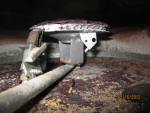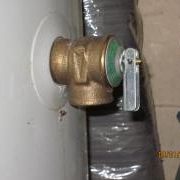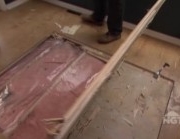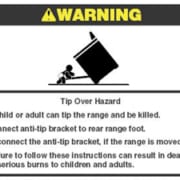Why is My Water Heater Leaking?
Have you taken a look at your water heater recently? They typically sit in our basements, and we really don’t think about them for years until one day you find them leaking, or worse, spilling gallons of water on the floor. There are a few maintenance tips I give home buyers during an inspection that I’d like to share and also some general inspection tips you can do every so often to try to avoid having gallons of water spilled on your floor.
First off, the maintenance tips. I always like to show homebuyers the Temperature Pressure Relief (TPR) valve. This is one of the major safety features on a water heater. You’ll usually find it on the side of the tank, sometimes on top. It should have a pipe attached to it that runs down the side of the tank and stops short of the ground (it should terminate within 6” of the ground). The TPR valve is
meant to release before the temperature gets too high or pressure builds up too much to the point where the tank would explode (do a Google search for some cool video).

It should be tested once or twice a year. It’s pretty easy – just put a bucket at the base of the discharge pipe, lift up the lever on the TPR valve, let some water run out and release the lever back down. If you don’t get any water or it continues to drip after it’s drained, it’s time to have the TPR valve replaced.
While you’re testing the TPR valve, take a look at the discharge pipe. First off, there should be one. If there isn’t one (see pic), it’s a safety hazard if that valve were to release. Next, there should not be a cap on the end of it (that would defeat the purpose). And the end of the pipe shouldn’t be threaded (to keep people from capping it). It should terminate within 6” from the ground.
From a maintenance standpoint, the other thing you can do is drain some water out of the bottom of the tank once a year or so to flush and sediment out of the base of the tank. If you’ve got an older water heater and you’ve never done it, it might not be worth trying to start doing it now. But if your water heater is only a few years old, it’s a yearly task that should get you more life out of the water heater.
To do this, connect a short hose to the drain valve at the base of the water heater and run it to the main floor drain, laundry sink, bathtub or even outside. Shut-off the cold-water supply to the water heater (there should be a shutoff valve on the cold water piping just above the tank) and/or the electricity running to the water heater. Open a hot water faucet (maybe at the laundry sink if that’s nearby). And open the drain valve. Watch the water coming out, you might find that you have to turn the cold-water supply on and off to help flush the sediment out of the base of the tank. There’s a great video on how to do this here:
http://www.thisoldhouse.com/toh/video/0,,20047191,00.html
That’s if from a maintenance standpoint. It’s also good to visually inspect your water heater a couple of times a year. First take a look at that discharge pipe connected to the TPR valve. Is there water dripping from it? If so, the TPR valve likely needs replacement. Next take a look at the top of the tank. Are combustible materials (like pipe insulation) cleared at least 12” from the top of the tank? Take a look at the cold (and maybe hot) water supply shut-off valves. Do they look corroded? Might be time to have a plumber out to replace them.
If you’ve got a gas water heater, take a look around the draft hood area at the top of the tank. Take note if there are a lot of rust flakes in this area. It could be an indication the water heater is having problems drafting or not combusting properly. Take a look at the flue pipes. Are they connected with at least three metal screws at each connection? Does it pitch upwards at least a ¼” per foot? If there are too many bends in the flue pipe that might be why it’s not drafting properly. Might be time to call in an expert for further evaluation.

You can also take a look inside the burner chamber of gas-fired water heaters. Rust flakes and corrosion are an indication the water heater’s getting old. If there are a lot of rust flakes, it might be time to consider replacement. Look at the base of the tank while you’re down here. See any water? If so, the tank is probably ready to dump. Make sure you keep combustibles away from this area and it’s not blocked so the water heater can get the proper amount of air it needs to combust properly.
Let the hot water run at a faucet and listen to the water heater as it’s heating up water. Is the tank making noise? I’ve had some water
heaters that sound like they’re making popcorn inside the tank. The sound is the sediment in the bottom of the tank bouncing around as it’s heated up.
So, take some time to take a look at your water heater. Keep in mind
that the typical service life for water heaters is 10-12 years. That’s just the average. I’ve had people tell me their water heater dumped out at eight years. But with a little maintenance, you can get plenty of life out of them.








Great blog! Very informative and interesting to read. This will help the people know that water heaters that’s not maintained are a high risk.
Great post! This will help the people assess their water heater to make sure that everything’s running well.
Thanks so much for explaining how a water heater should work. My parents have been complaining about their showers getting cold really quickly and they’re not sure why. We’ve been looking into calling down a professional to take a look at their water heater and hopefully get it fixed.
Thanks for sharing that when there are leaks in our home, it is best that we have it repaired immediately before mildew or mold thrives. I do agree that it is important that we have leaks attended to prevent damage. I think I will speak with a plumber to ensure that it will be repaired properly.